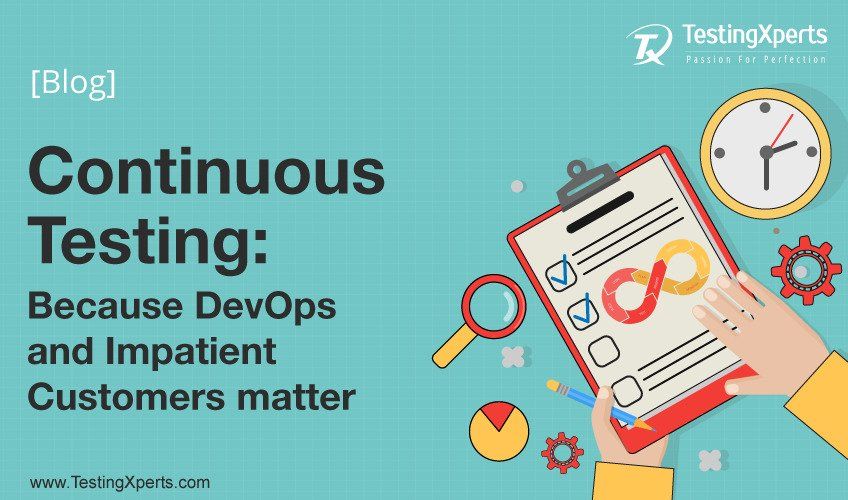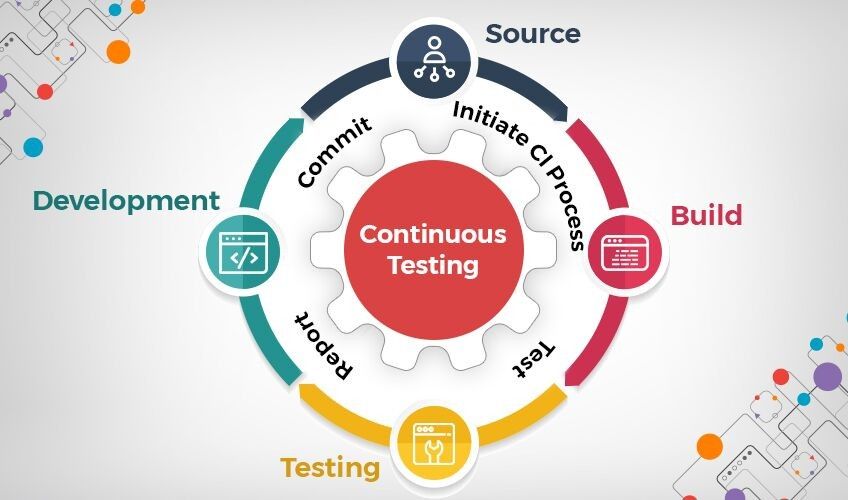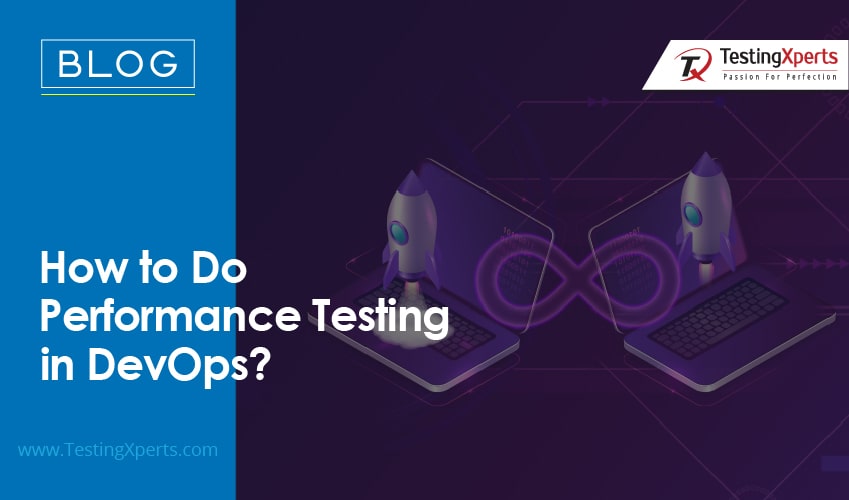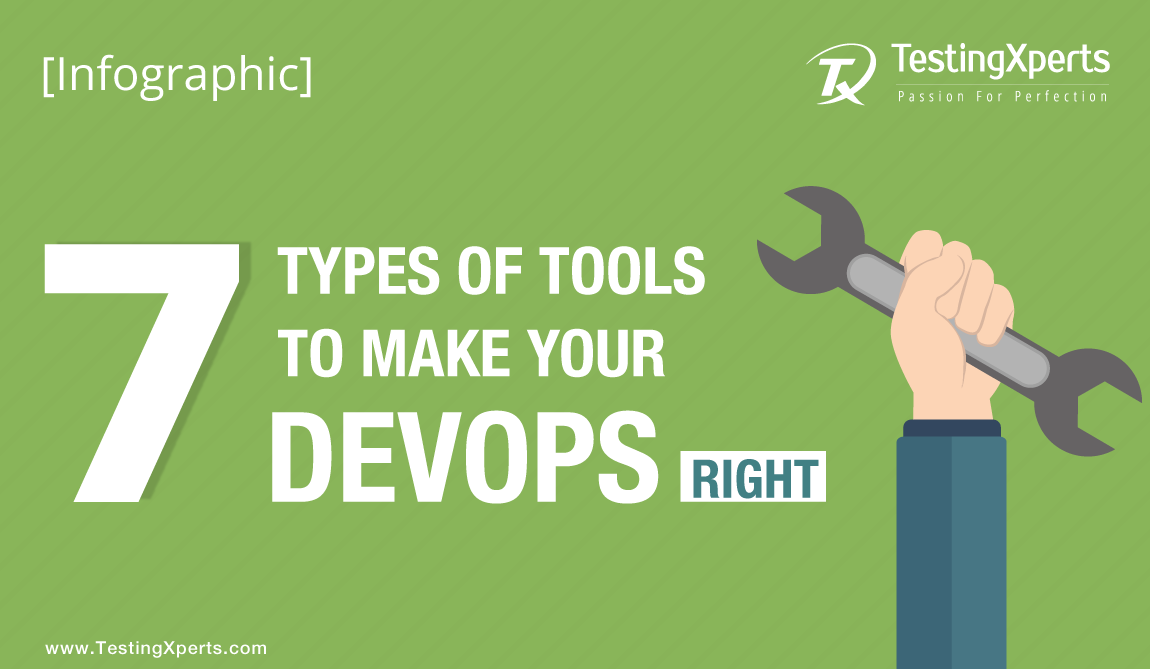
In a world where everyone is running at a breakneck speed, the slow-motion era of conventional testing will just not hold ground, any more. Step into the power of Continuous Testing and be a sharp enterprise.
- Continuous testing and Devops World
- Enters Dev, Shakes Ops
- Benefits of Continuous Testing and Devops
- Shift to Continuous Testing
Continuous testing and Devops World
Before we knew it, the rise of an app-economy, fierce consumerization of technology, the arrival of digital natives and penetration of new technological marvels in everyday lives have strongly changed the way products and services are expected, consumed and forgotten. It’s a strange new-world where a company must be digitally-nimble and be there for a customer – every time and at any time.
Now in this app-stirred world, isn’t it fascinating that the rate of churn of new software is so fast today that to test it effectively in itself has become an onerous and slippery task? At the same time, can we ignore that in 2016, software failures have culminated into losses as huge as $1.1 trillion?
Let’s face it.
1. Always-on Users: Today’s customers are born into technology and there’s no weaning them away from the 24/7 and always-available services they have gotten used to. Enterprises and CTOs may find this problem a new beast altogether, since the digitally-born rivals are miles ahead in serving customers with jaw-dropping speed and an absolutely-robust grip on the pulse of the new-age customer.
2. Time to rethink the Status-Quo: There is no way that snail-paced, Luddite and bureaucracy-driven methods of building and testing apps can survive in this blistering world where apps come and go before you blink an eye.
How can you ensure that while your developers are trying to tune in to this new race, you also manage to have your QA and testing team ensure that the apps and offerings you put on your customer’s plate are not only dished out fast, but they also get a thumbs-up on quality and utility?
It’s a dilemma-dotted scenario where apps have to be continuously built, deployed, tested and released, but at the same time, IT can leave no room for any mistakes when it comes to defects, risks and usability issues.
Enters Dev, Shakes Ops
DevOps and the rise of Micro-services have prodded the Dev professionals into always being on their toes. However, the Ops side had to come and rub their shoulders too, without slugging behind.
That has engendered a very relevant and clever genre of testing, making businesses and testers re-imagine everything they took granted so far.
Benefits of Continuous Testing and Devops
1. It allows the software delivery pipeline to gather feedback that is immediate, continuous and actionable; and helps the business to be pre-emptive with risks around a software release.
2. One can sync in QA testing with Dev and Ops processes in an optimized, proactive and seamless way and hence put a tick-box on both business and development goals.
3. Now Dev sprints can find Ops and QA folks running side by side and both can ensure adequate quality, proper and effective coverage for frequent builds of the modern-day app-economies.
4. Since the onset of Agile development methodology and the app-economy era that came close on its heels, enterprises have been struggling to make sure QA is not miles behind the nimble and super-fast Dev processes that are almost status-quo now. With Continuous Testing, one can pull in a systematic approach, sturdy process improvement, and integration of QA into skate-board-strapped Dev and Ops processes; but, also be relaxed regarding the continuity that is fundamental and critical for faster development cycles.
5. Think of a new paradigm of automated tests. More organizations can now be seen embracing automated acceptance tests too. During the commit stage, these tests are being deployed and the range spans from functional to non-functional criteria while guarding against regression and ensuring overall business value as expected by the customer. These tests may spot errors that may be beyond the grip of unit and component tests as well. Interestingly, these acceptance tests are customer-facing unlike unit tests that are usually developer-facing. That’s a quantum leap for enterprises today that are fighting the relentless challenge of being relevant for digitally-savvy and always-on customers.
6. The context of a production-like environment is another highlight of these kinds of tests. Smart use of a risk-based testing approach will be a major accelerator for many enterprises here. With such tools and an evolved state of automation, enterprises can be assured of continuity in testing, and at the same time, confident about precise risk-assessment and mitigation insights that pour in at the right time to the right person.
7. Core automation is passé but in a continuous testing, adequate risk-based impact analysis comes to the forefront. Nowadays experts in the field are also offering a layered approach that entails test implementation layer and application driver layer. This helps the code to cover interaction with application to perform actions and test results. So much so that any small change in an application’s source code, configuration, environment or data can spur a new instance in the pipeline altogether.
Let’s remind ourselves that in this agile-app, fast-economy and tech-fuelled world, the age of monolithic and flabby software testing is over. Now is the time for the lean and the mean to jump in. Innovation and agility are no more longer in SDLC today, and conventional software testing cannot furnish the visibility, responsiveness, scope and endurance that the new age demands.
A shift to Continuous Testing is a no-brainer if you want to keep your customers happy with services run from robust, dependable, maintainable and automated suites as integral and easy parts of the lifecycle.
The certainty of providing the best user experience – one high on comfort and still free of defects needs a mindset switch – Test early, test faster, test often and test continuously.
Discover more
Get in Touch
Stay Updated
Subscribe for more info






